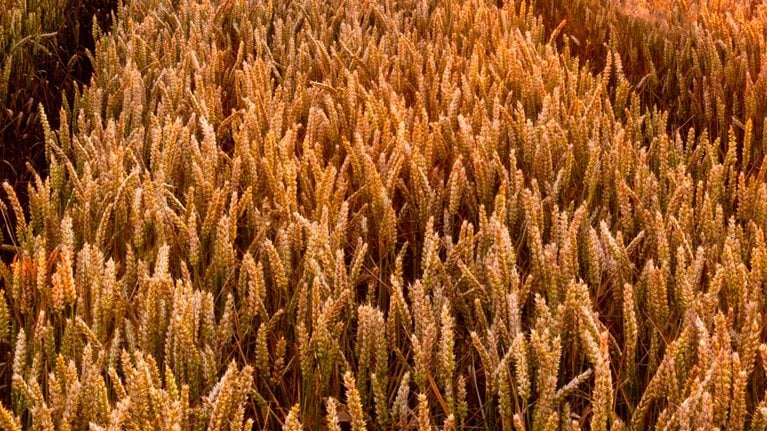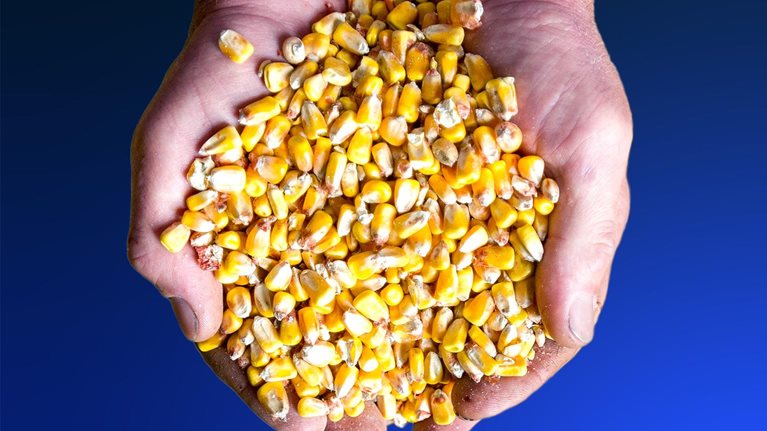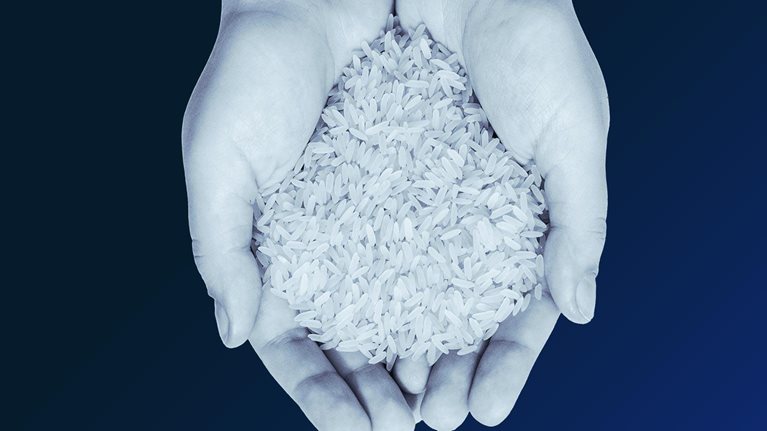Mark van Nieuwland is the vice president of Bovaer, a methane-reducing feed additive, at Swiss-Dutch nutrition, health, and beauty company dsm-firmenich. Joshua Katz, a McKinsey partner and leader in the agriculture and private equity space, and Wilson Roen, a McKinsey consultant and sustainability fellow, talked with Mark about the development of Bovaer, how the agriculture industry can encourage further adoption among farmers, and what the world can do to support critical sustainability and decarbonization initiatives.
McKinsey: Thinking back to the start of Bovaer, what inspired the deep dive into product development? How would you characterize where you are today and where you’re going?
Mark van Nieuwland: About 15 years ago, we were considering our future innovation themes, and one of those themes was how to respond to human-induced climate change. From there, people brought their ideas, one of which was reducing methane emissions from cattle.
Now fast forward to just over a year ago: the so-called Clean Cow project came to fruition with its first market approvals in Brazil and Chile. Today, Bovaer is available in more than 45 markets, with availability in the United States expected sometime in the first half of next year. So we’ve seen tremendous acceleration on the market-approval side.
In recent years, food processors, retailers, and food and beverage companies started to lower their CO2e [carbon dioxide equivalent] emissions, and with dairy and beef having such large footprints, these were areas in which companies tried to reduce their emissions—for example, through knowledge sharing and incentivizing farmers for their sustainability practices.
More recently, methane became a big topic. Just look at the Global Methane Pledge, in which more than 150 countries have agreed to lower methane emissions by 30 percent by 2030.1 Before that, everybody was looking at CO2 and CO2e. Now, singling out what needs to happen with methane has created additional momentum, with countries and the first companies aligning their targets with the Pledge. Solutions to reduce methane emissions have become increasingly important, and this is exactly where Bovaer fits in.
To put all of this into perspective, over the past eight months or so, Bovaer has saved approximately 40,000 metric tons of CO2e. This year, we’ll exceed 100,000 metric tons, and we’ll soon reach millions of metric tons.
McKinsey: How are farmers thinking about and adopting Bovaer? And how are you engaging the broader ecosystem to encourage adoption?
Mark van Nieuwland: There are two main questions from farmers. The first is, “Does Bovaer affect animal performance?” The answer is no. But it’s always important to confirm that. The second question is, “Who pays for it?” On this point, we’ve been working with players across the value chain to facilitate either paying farmers directly or reimbursing them later on. If it’s a cost-neutral operation and there’s no negative performance impact, many farmers are much more willing to make a change. This is primarily because they themselves are affected by climate change. Anything they can do to avoid climate change is important. It’s also a license to operate in certain geographies. And finally, there’s a willingness to do things better, particularly with the younger generation.
Adoption should be encouraged downstream and across the broader ecosystem. Regarding downstream, we need to inform processors, retailers, and food-services companies. That means communicating that a solution is available, that it’s manageable from a cost perspective, and that there’s an immediate ability to make a significant impact. And regarding the broader ecosystem, it’s a matter of making sure people are recognized for their carbon or methane reductions. That means thinking through how information flows and how to handle verification, among other things.
It’s also increasingly important to think about making these reductions visible at the country level. Even though we launched less than a year ago, there are countries where we are already reaching adoption of up to 7 percent of all dairy cows. If you take a 30 percent reduction on those emissions, that can translate to a 1 to 2 percent reduction in emissions from dairy cattle in those countries.
And the last part is working with the farmers and the nutritionists so they can make informed decisions on how to implement the product. As an example, we mix Bovaer into the mineral mixes, the vitamin mixes, or any other feed source that already goes to the farm. This means the farmer has no additional handling responsibilities. The only additional thing they need to do is take a picture of the invoice for certification reasons. And in the future, this could even be done through APIs. The more burdens you take away and really fit into the normal day-to-day practices, the easier it is.
McKinsey: What does the world need to do for us to move from the 7 percent range to a much higher number?
Mark van Nieuwland: Although 2030 targets help, it’s even more helpful if companies also have 2025 and 2027 targets; otherwise, it’s easy to put off implementation until late 2029. If you do that, nobody will build capacity because they won’t believe the market is there. A line of sight and interim reduction ambitions or targets can help build the market over time.
Today, there are a lot of different rules and applications and different ways of calculating reductions. Therefore, some standardization across players and markets would be helpful. Showing footprints is becoming a requirement for supply and trade deals. Even supermarkets are starting to ask, “What’s the footprint of this product?” If five different companies have five different ways of calculating their footprints, it makes it difficult for a supermarket to prioritize their decisions. Some supermarkets are going one step further and are demanding their suppliers to join the Science Based Target initiative [SBTi] 2 and instructing them on how to report.
Moving forward, the transition that’s currently happening from offsetting to insetting, or the reduction emissions in the value chain, will play an enormous role. Historically, people have thought, “Let me sell to the highest buyer,” which meant many reductions were moving beyond the agricultural food processing chain. Also, many companies inside the value chain were simply buying the cheapest offset available. Now, with the rule changes—among others based on SBTis—reductions will need to be realized and stay in the chain. This will accelerate the transition.
At the end of day, there’s a lot of money—subsidies, government funds, grants, and philanthropy—that still goes to research for additional solutions. This money is mainly used for research, but there’s too little emphasis and investment into early movers that exist today. If the market and ecosystem is established and proven, innovation will always follow, so it’s important to sufficiently spend time and money on market creation. Just to be clear, I’m not saying we shouldn’t do research. It’s more a matter of rebalancing that research to stimulate early adoption and support.
Lastly, appropriate regulatory frameworks and speed in regulatory reviews are needed to support early adopters and make them the champions. Appropriate regulatory frameworks will help make sure people who make a change are consistently recognized for their efforts.
McKinsey: On the point of early adoption of these types of technologies, are there geographies that you’re more excited about or where there is more movement?
Mark van Nieuwland: One region that has been an early and rapid adopter is Australia, which we did not expect at all. This means that once we got into the market, we had absolutely no inventory in place. Considering the container challenges over the past year, getting inventory to Australia was quite difficult.
That said, the reason for increased adoption in Australia is there’s an industry that has very clear 2030 targets. The meat and livestock sector in Australia has set carbon-neutral targets. That’s extremely ambitious, but it does foster a few things. For instance, the larger beef processors know that this target is starting and therefore say, “How can I pilot things that are coming up?” So you have a group of early adopters.
There’s also an extensive research infrastructure in the country—different research institutes, different ways of measuring methane reductions—which allows many groups to do things in parallel. Furthermore, there’s quite a bit of funding available from both a scientific and early commercialization perspective, which again helps companies get started. The fact that they also signed the Global Methane Pledge recently also helps.
To summarize: there’s a clear target. There’s research infrastructure, which supports the adoption. There’s early money to help companies that are actually willing to make a change because they still see potential.
McKinsey: What other kinds of decarbonization opportunities are you excited about?
Mark van Nieuwland: To continue off the previous point, there’s a lot of exciting research happening about how to reach more animals. I often get asked, “Why are you still spending money on innovation when you’ve already solved it?” Well, we’re essentially spending money on how to reach the next cow. And finding different ways of feeding, different forms, and different formulations.
Feed additives tend to work well in advanced markets: the United States, Canada, Europe, Australia, Japan, and Korea—maybe China, as well. There are large numbers of cattle in many other countries, each with different conditions. In many of those countries, the first question should be how to improve productivity. For example, how do you get the cows that are in Africa and India to produce a bit more milk? Hopefully, this means needing fewer cows as the global population grows.
The fact that biogas digesters become increasingly attractive at smaller scale also plays a big role. Historically, the big systems made sense; but nowadays, smaller systems also make sense from an economic perspective, which has significant untapped potential in many markets. And leveraging that either through miniaturization or by pooling different groups together to use one digester will be another key lever.


